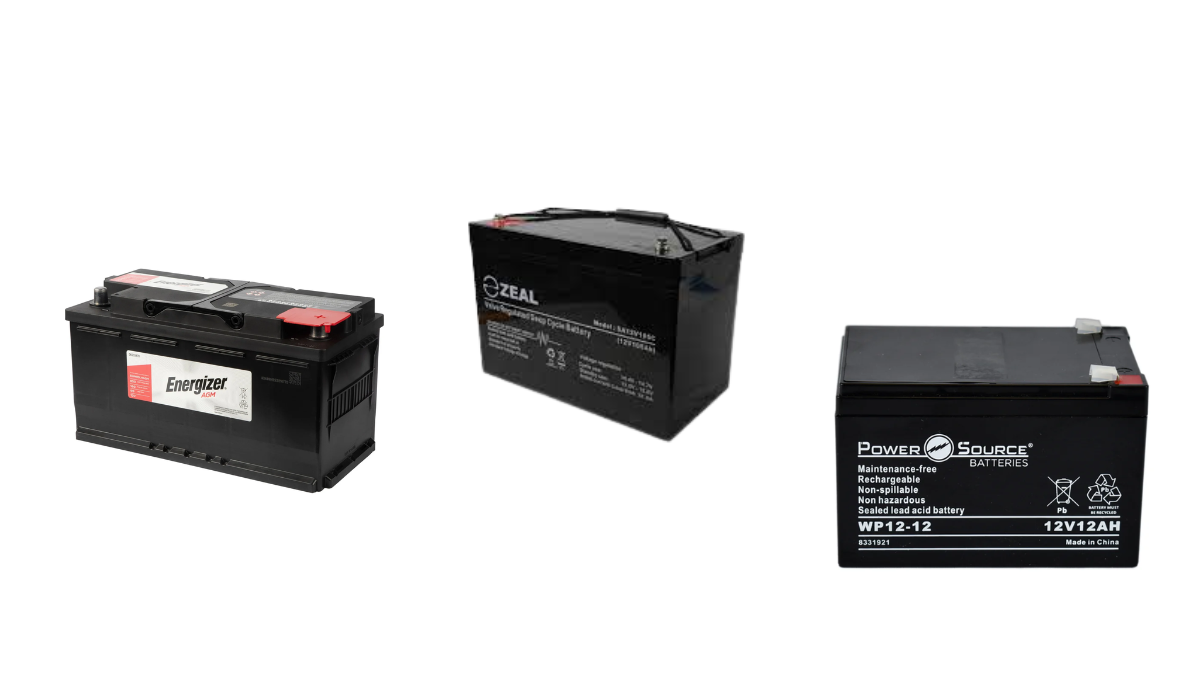How Temperature Affects AGM Battery Performance
When it comes to reliable power storage, the AGM battery (Absorbed Glass Mat) remains a top choice for caravans, off-grid setups, boats, and backup systems across Australia. Known for being maintenance-free and durable, AGM batteries are often trusted in demanding environments.
But one factor that users often overlook — or misunderstand — is how temperature impacts battery performance, charging efficiency, and lifespan. Whether you’re dealing with extreme heat in the outback or frosty mornings in alpine regions, knowing how temperature affects your AGM battery is critical for getting the best out of your setup.
This guide breaks down everything you need to know, with actionable tips and product suggestions to keep your power system running strong — no matter the season.
Need a charger optimised for Australian conditions? Explore our AGM battery charger range here →
What Is an AGM Battery?
Before we dive into thermal effects, let’s quickly revisit what an AGM battery is.
An AGM battery is a type of sealed lead-acid battery where the electrolyte is absorbed into a fibreglass mat separator, sandwiched between the lead plates. This design:
- Prevents spills and leaks
- Supports deep cycling
- Reduces internal resistance
- Allows faster recharging than traditional flooded batteries
Their robust construction makes them ideal for vibration-heavy environments and temperature fluctuations — but like all batteries, performance is highly temperature-dependent.
How Heat Affects AGM Battery Performance
1. Increased Self-Discharge Rates
As ambient temperatures rise, so does the self-discharge rate of an AGM battery. While AGM batteries normally have a very low self-discharge rate (around 1–3% per month), this can double or triple in high heat conditions.
This is particularly relevant for users who:
- Store batteries long-term (e.g. backup systems)
- Travel in hot regions
- Use solar setups where battery temps spike under sunlight
2. Accelerated Plate Corrosion
Heat also speeds up chemical reactions inside the battery, which can degrade the lead plates more quickly over time. This leads to:
- Reduced capacity
- Shortened battery lifespan
- Poorer performance under load
If you frequently operate in areas where daytime temps exceed 35°C, proper ventilation and insulation are essential.
3. Overcharging Risk in High Temps
Charging voltages for AGM batteries must be adjusted based on temperature. If not, there’s a high risk of overcharging, especially in warm climates.
Overcharging can:
- Cause thermal runaway (a dangerous overheating cycle)
- Dry out the electrolyte absorbed in the mat
- Create internal damage that shortens lifespan or leads to failure
Tip: Always use a smart charger with temperature compensation to ensure safe, efficient charging in hot environments.
Protect your system in warm conditions. Browse AGM chargers with temperature sensing technology here →
How Cold Temperatures Affect AGM Battery Performance
1. Reduced Battery Capacity
At low temperatures, chemical activity inside the battery slows down. This can reduce available battery capacity by up to 50% at freezing temperatures (0°C) — and even more below that.
This is crucial for:
- Early morning starts in caravans or boats
- Winter backup systems for homes or sheds
- Users in alpine or regional zones during cooler months
2. Slower Charging
Cold weather also causes the internal resistance of AGM batteries to increase, which means they charge more slowly and may require longer absorption phases.
To avoid undercharging in winter:
- Use a charger with a dedicated AGM mode
- Extend your charging time when temps drop
- Consider storing batteries in a protected, moderately warm location if unused
3. Risk of Undercharging & Sulphation
If a cold battery is consistently undercharged, it can lead to sulphation — the build-up of lead sulphate crystals on the battery plates. Sulphation reduces performance, hinders recharging, and can cause permanent damage over time.
Using a multi-stage charger with cold-weather capabilities is one of the best defences.
Ideal Operating Temperatures for AGM Batteries
- Optimal range: 20°C to 25°C
- Acceptable range: 0°C to 50°C
- Extreme limits: Can tolerate -15°C to 60°C for short periods, but with performance drops
If you expect your battery system to operate regularly outside this ideal range, temperature considerations should shape everything from your battery choice to how and where it's installed.
Best Practices for Managing AGM Battery Temperature
To keep your AGM battery performing reliably year-round:
-
Use chargers with temperature compensation: These automatically adjust charge voltage based on real-time battery temp.
-
Install batteries in shaded, ventilated enclosures: Avoid direct sunlight and enclosed heat traps.
-
Allow for natural airflow: Proper ventilation minimises thermal build-up in high-load systems.
-
Avoid charging immediately after high-draw cycles in hot weather: Let the battery cool slightly before recharging.
- Pre-warm batteries during extreme cold spells: Especially if you rely on the battery for engine starts or deep cycling.
Looking to protect your AGM battery from temperature-related issues? Explore our trusted AGM battery chargers now →
How to Choose the Right AGM Battery Charger
A high-quality AGM battery charger is your first line of defence against temperature-related damage.
Look for features like:
- Multi-stage charging (bulk, absorption, float)
- AGM-specific voltage profiles
- Temperature compensation
- Auto shut-off and overcharge protection
- Deep cycle optimisation
DC Direct stocks a curated range of AGM battery chargers built for Australian conditions — whether you’re powering up a 4WD fridge, a boat, or an off-grid solar bank.
Final Thoughts: Don’t Let Temperature Kill Your AGM Battery
AGM batteries are tough, but even the best systems can suffer in the wrong climate — especially without the right charger.
Understanding how heat accelerates wear and cold reduces capacity gives you the power to plan, protect, and extend the life of your setup.
At DC Direct, we’re here to make that easy. From deep-cycle applications to solar storage, our range of AGM chargers and accessories are selected to meet the needs of Aussie adventurers and professionals alike.
Explore our AGM battery charger collection and get more life, power, and reliability from your battery setup. Shop Now →

